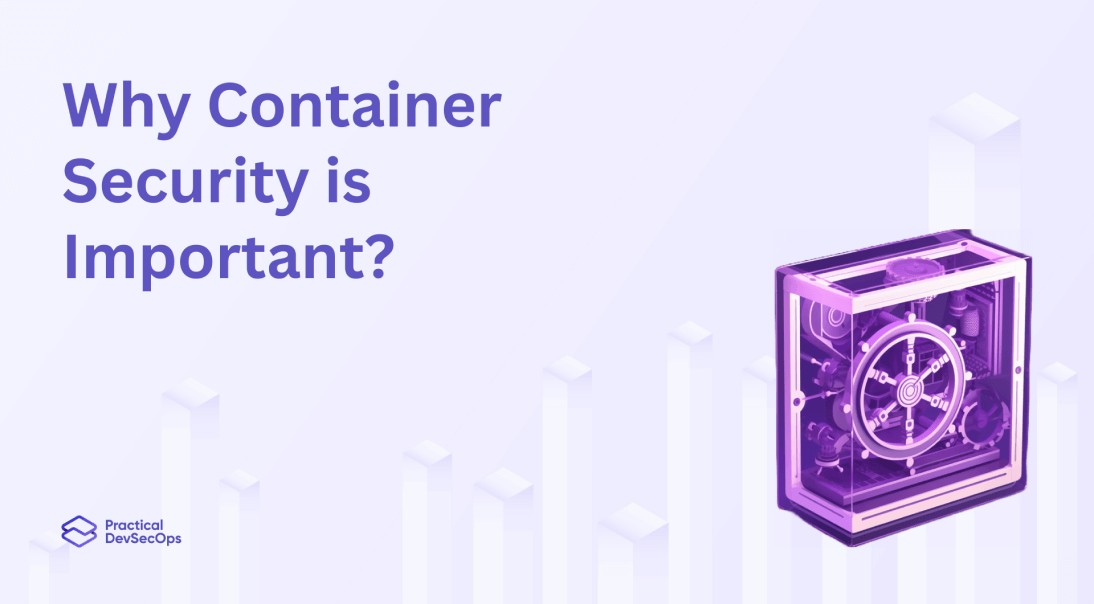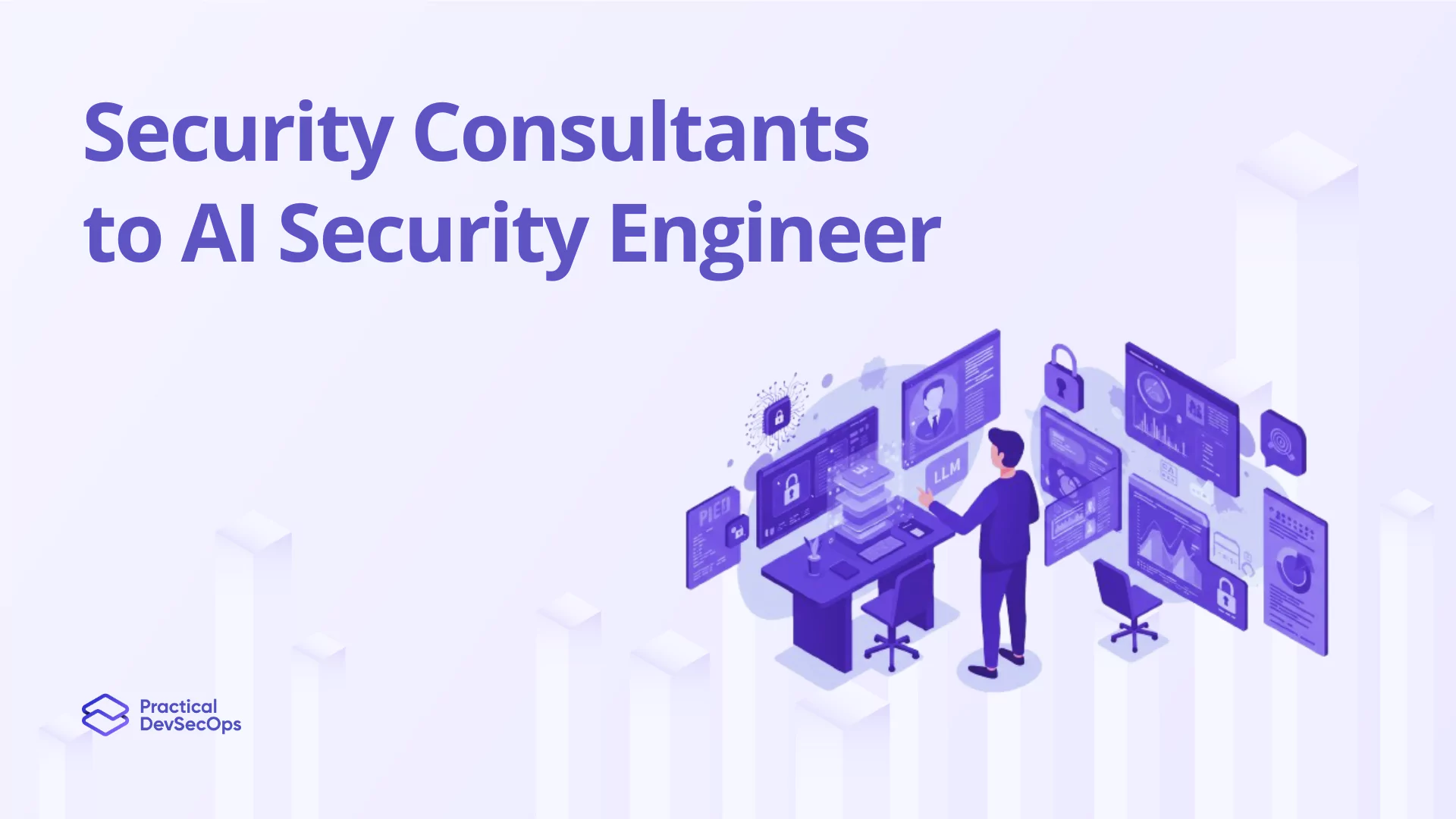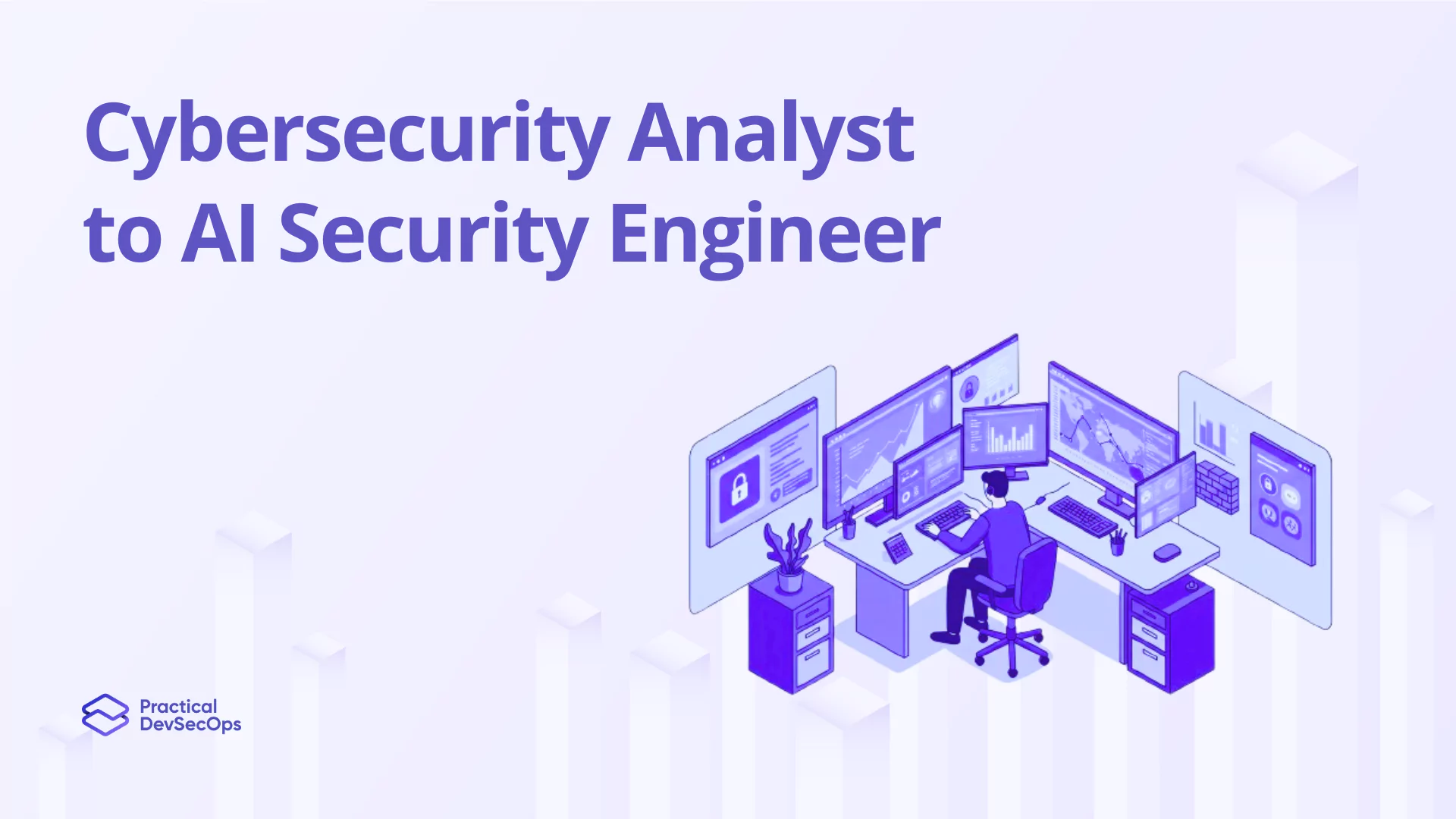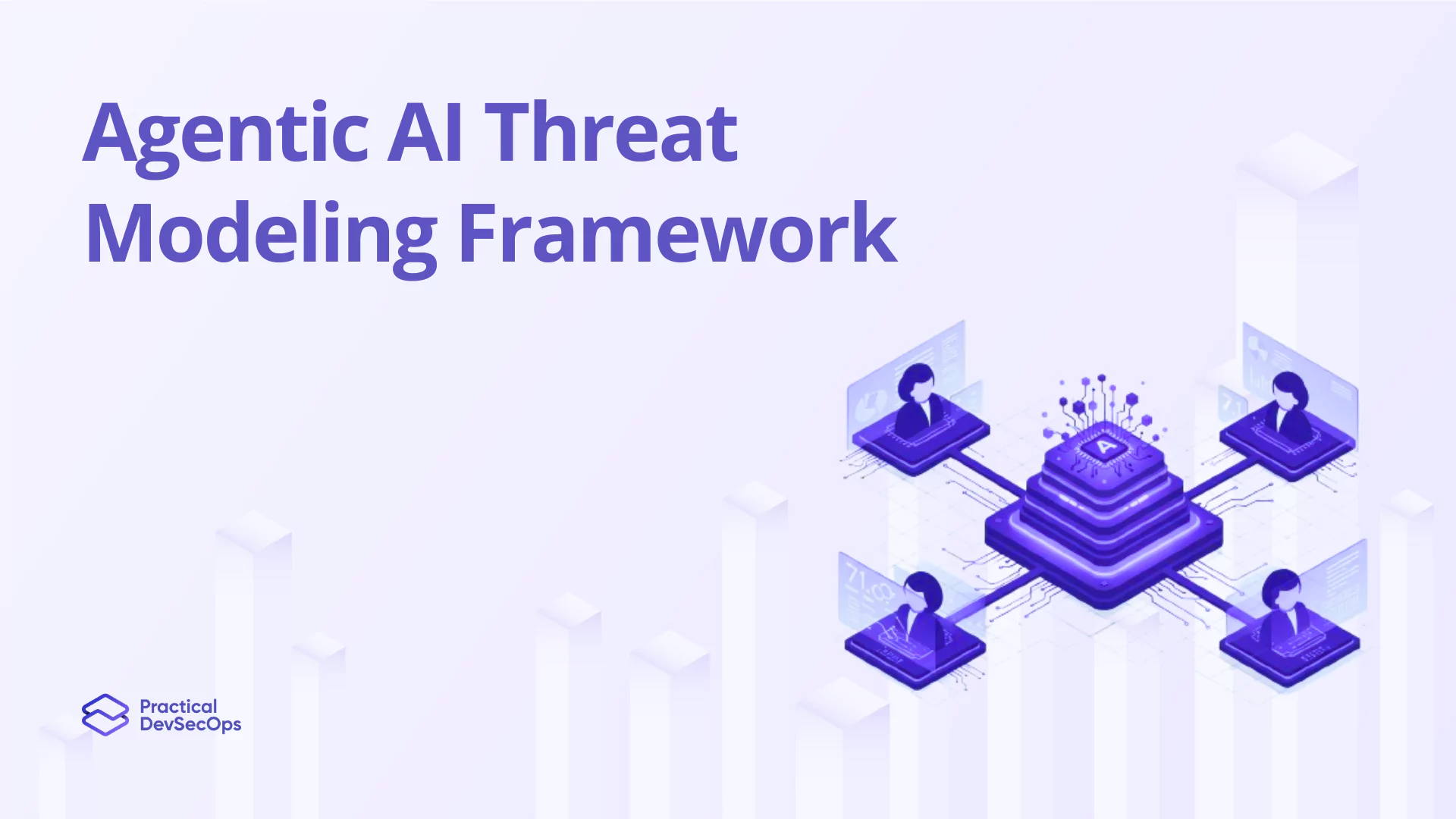Container security is the protection of containerized applications and their infrastructure throughout the entire lifecycle. In 2025, this encompasses securing container images, runtime environments, orchestration platforms, and CI/CD pipelines.
The stakes are higher now than ever before. AI-driven attacks can now target container vulnerabilities with unprecedented speed and precision. Stricter regulatory frameworks like CNAPP and updated NIST guidelines specifically address container environments, imposing significant penalties for non-compliance.
As containers have become ubiquitous across industries from finance to healthcare, they present an expanded attack surface that attackers increasingly target.
Today, robust container security isn’t merely an IT consideration but a critical business requirement affecting operational continuity, reputation, and compliance.
Reason #1: Protecting Sensitive Information
“Applications in containers store sensitive data, such as personal identifiable information and financial details.”
Container security prevents data breaches, minimizing financial loss and damage to an organization’s reputation.
Reason #2: Ensuring Compliance
“Industries like healthcare, finance, and government have strict regulatory requirements for data storage and processing.”
Container security helps organizations comply with regulations and avoid penalties for non-compliance.
Reason #3: Defending Against Cyber Attacks
“Containers isolate applications from the host operating system, reducing the attack surface.”
However, inadequate container security can still leave applications vulnerable to malware, data theft, and DoS attacks.
Reason #4: Monitoring and Identifying Threats
“Container security provides visibility into the container environment for monitoring and threat detection.”
Administrators can analyze container status, network traffic, and system logs to detect and respond to security breaches quickly.
Reason #5: Reducing Risk in DevOps
“Integrating security into the DevOps process is crucial.”
Container security tools automate security checks, ensuring applications are secure throughout the development and production stages.
Also Read, Container Security Best Practices
How Container Security Has Evolved (2020–2025)?
Container security has transformed dramatically over the last five years. In 2020, organizations focused primarily on scanning container images for vulnerabilities before deployment. Security was often an afterthought, bolted on at the end of development cycles.
By 2022, runtime protection gained prominence as attacks targeting container escape vulnerabilities increased. The industry shifted toward “shift-left” approaches, integrating security earlier in development.
2023 marked the rise of supply chain security following high-profile attacks. Organizations began scrutinizing base images and dependencies more rigorously while implementing software bills of materials (SBOMs).
Today, in 2025, container security has matured into a comprehensive discipline. We now see security-as-code practices where protections are defined alongside infrastructure. Zero-trust principles have become standard for container environments, with granular identity-based access controls and network policies. AI-powered tools now provide predictive threat detection, identifying potential vulnerabilities before they’re exploited.
The most significant evolution has been the mindset shift—from treating container security as a specialized concern to recognizing it as a fundamental requirement for modern application development.
Challenges in Modern Container Security
Supply chain attacks have become increasingly sophisticated in 2025, targeting container ecosystems through compromised base images and dependencies. Attackers now inject malicious code that remains dormant until specific runtime conditions occur, making detection during static scanning nearly impossible.
Misconfigurations remain the most common vulnerability despite automation advances. Overly permissive container privileges, exposed APIs in orchestration platforms, and inadequate network segmentation continue to create critical security gaps. The complexity of modern containerized environments makes consistent configuration management extraordinarily difficult even for experienced teams.
Runtime threats have evolved to exploit the ephemeral nature of containers. Advanced attacks now target container orchestrators directly, allowing lateral movement between workloads. Memory-based exploits that leave no traces in logs pose particular challenges for detection systems.
The explosion of microservices has expanded attack surfaces exponentially, with the average enterprise now managing thousands of containers across multiple environments. This scale makes comprehensive visibility and protection increasingly difficult without sophisticated tooling.
Resource constraints further complicate security efforts, as intensive security tooling can impact container performance and startup times, creating friction between security and operations teams.
Container Security in Multi-Cloud and Hybrid Environments
Container security in multi-cloud and hybrid environments presents unique challenges requiring unified approaches across AWS, Azure, Google Cloud Platform (GCP), and on-premises infrastructure. This comprehensive guide addresses security considerations, best practices, and platform-specific implementations for enterprise container deployments.
Key Topics Covered:
- Multi-cloud container security challenges
- Platform-specific security controls (AWS, Azure, GCP)
- Hybrid environment security strategies
- Identity and access management across clouds
- Compliance and monitoring solutions
Understanding Multi-Cloud Container Security Complexity
Why Multi-Cloud Container Security Matters?
Modern enterprises deploy containerized applications across multiple cloud providers and on-premises infrastructure rather than standardizing on a single platform. This approach offers flexibility and risk mitigation but introduces significant security complexities.
Impact of Fragmented Infrastructure
- Increased Attack Surface: Multiple platforms expand potential vulnerability points
- Compliance Complexity: Different regulatory requirements across providers
- Operational Overhead: Varied security tools and processes
- Visibility Gaps: Disconnected monitoring across environments
Core Container Security Challenges in Multi-Cloud Environments
1. Identity and Access Management (IAM) Fragmentation
Challenge: Each cloud provider implements unique IAM systems, creating inconsistent access controls.
Impact:
- Difficult unified user management
- Inconsistent permission models
- Potential privilege escalation risks
- Complex audit trails
2. Compliance Control Inconsistencies
Challenge: Varying compliance frameworks and enforcement mechanisms across providers.
Impact:
- Regulatory compliance gaps
- Inconsistent security postures
- Complex audit requirements
- Potential penalties and violations
3. Multi-Platform Visibility and Monitoring
Challenge: Achieving comprehensive security visibility across disparate environments.
Impact:
- Blind spots in security monitoring
- Delayed threat detection
- Incomplete incident response
- Fragmented security analytics
4. API and Interface Security Exposure
Challenge: Multiple cloud APIs and interfaces increase attack vectors.
Impact:
- Unprotected API endpoints
- Inconsistent authentication methods
- Increased breach potential
- Complex security management
5. Cross-Cloud Data Security
Challenge: Ensuring consistent encryption and secure data flows across platforms.
Impact:
- Data exposure risks
- Inconsistent encryption standards
- Complex key management
- Regulatory compliance issues
Platform-Specific Container Security Implementations
Amazon Web Services (AWS) Container Security
AWS IAM and Access Control
- Implementation: AWS Identity and Access Management (IAM)
- Best Practice: Enforce least-privilege access principles
- Tools: IAM roles, policies, and resource-based permissions
- Container Focus: Restrict ECS/EKS cluster access and pod-level permissions
AWS Container Image Security
- Service: Amazon Elastic Container Registry (ECR)
- Security Features:
- Vulnerability scanning integration
- Image signing and verification
- Lifecycle policies for image management
Best Practice: Scan all images before deployment, maintain trusted image repositories
AWS Runtime Protection
- Primary Tool: Amazon Inspector
- Capabilities:
- Continuous vulnerability assessment
- Compliance monitoring
- Runtime security analysis
- Integration: Works with ECS, EKS, and Fargate
AWS Host and Infrastructure Security
- OS Security: Regular patching and hardening
- Isolation: Linux namespaces and cgroups implementation
- Network: VPC security groups and NACLs
- Monitoring: CloudWatch and CloudTrail integration
AWS Data Protection
- Encryption at Rest: S3, EFS, RDS encryption
- Encryption in Transit: TLS/SSL for all communications
- Key Management: AWS Key Management Service (KMS)
- Secrets: AWS Secrets Manager integration
AWS Audit and Compliance
- Logging: CloudTrail for API activity
- Configuration: AWS Config for compliance monitoring
- Reporting: Automated compliance dashboards
Microsoft Azure Container Security
Azure Role-Based Access Control (RBAC)
- Implementation: Azure Active Directory integration
- Granularity: Resource-level and action-specific permissions
- Container Services: AKS, ACI, Container Instances
- Best Practice: Implement the principle of least privilege
Azure Container Registry Security
- Service: Azure Container Registry (ACR)
- Security Features:
- Vulnerability scanning with Qualys
- Content trust with Docker Notary
- Geo-replication for availability
- Integration: Seamless AKS integration
Azure Network Security
- Network Security Groups (NSGs): Traffic filtering rules
- Azure Firewall: Centralized network security
- Virtual Network: Isolation and segmentation
- Application Gateway: Web application firewall
Azure Continuous Security Monitoring
- Primary Tool: Microsoft Defender for Cloud
- Capabilities:
- Threat detection and response
- Vulnerability management
- Compliance dashboard
- Security recommendations
Azure Secrets Management
- Service: Azure Key Vault
- Features:
- Centralized secret storage
- Hardware security module (HSM) backing
- Access policies and audit logging
- Integration: Native AKS integration
Azure Patch Management
- Scope: Host systems, Kubernetes clusters, container runtimes
- Automation: Azure Update Management
- Scheduling: Maintenance windows and rollback procedures
Google Cloud Platform (GCP) Container Security
GCP Identity and Access Management
- Implementation: Google Cloud IAM
- Granularity: Resource-level permissions with conditions
- Container Services: GKE, Cloud Run, Compute Engine
- Best Practice: Use service accounts with minimal permissions
GCP Container Image Security
- Services: Container Registry, Artifact Registry
- Security Features:
- Vulnerability scanning with Container Analysis API
- Binary Authorization for deployment policies
- Attestation-based security
GCP Binary Authorization
- Purpose: Deployment policy enforcement
- Capabilities:
- Cryptographic attestation requirements
- Policy-based deployment controls
- Integration with CI/CD pipelines
GCP Network Security
- Kubernetes Network Policies: Pod-to-pod communication control
- VPC Security: Firewall rules and network segmentation
- Service Mesh: Istio integration for advanced networking
- Private Clusters: Isolated node networking
GCP Audit and Compliance
- Cloud Audit Logs: Comprehensive activity tracking
- Security Command Center: Centralized security insights
- Compliance Tools: Automated compliance reporting
- Monitoring: Cloud Monitoring and Logging integration
Hybrid and Multi-Cloud Container Security Strategies
Unified Security Policy Management
Objective: Standardize security policies across all environments
Implementation Strategies:
- Policy as Code: Version-controlled security configurations
- Template-Based Deployment: Consistent security baselines
- Automated Enforcement: Policy validation and remediation
- Cross-Platform Standards: Common security frameworks
Centralized Monitoring and Automation
Objective: Unified visibility and automated security operations
Key Components:
- SIEM Integration: Security Information and Event Management
- Automated Response: Incident response automation
- Cross-Platform Dashboards: Unified security visibility
- Log Aggregation: Centralized log management
Cross-Platform Identity Management
Objective: Streamlined access control across multiple clouds
Solutions:
- Federated Identity: Single sign-on (SSO) across platforms
- Identity Brokers: Centralized identity management
- Multi-Cloud IAM: Unified permission management
- Zero Trust Architecture: Continuous verification model
End-to-End Encryption Strategy
Objective: Consistent data protection across all environments
Implementation:
- Encryption Standards: Uniform encryption algorithms
- Key Management: Centralized key lifecycle management
- Certificate Management: Automated certificate rotation
- Secure Communication: Mutual TLS (mTLS) everywhere
Automated Vulnerability Management
Objective: Continuous security assessment and remediation
Capabilities:
- Image Scanning: Automated vulnerability detection
- Runtime Monitoring: Real-time threat detection
- Patch Management: Automated security updates
- Compliance Scanning: Continuous compliance validation
Multi-Cloud Compliance Mapping
Objective: Unified compliance management across providers
Approach:
- Compliance Frameworks: Map to common standards (SOC 2, ISO 27001, PCI DSS)
- Automated Reporting: Cross-platform compliance dashboards
- Gap Analysis: Identify and remediate compliance gaps
- Audit Preparation: Centralized evidence collection
How is DevSecOps Transforming Container Security?
DevSecOps changes how teams secure containers. It adds automated security checks early in the development process. This means teams catch problems before they deploy applications.
Security tools scan code, container images, and configurations while developers work. They find vulnerabilities quickly and alert teams right away. This happens automatically as part of the regular development workflow.
DevSecOps brings development, operations, and security teams together. All three groups work as partners instead of separately. They share responsibility for keeping applications safe.
This approach shifts security to the left in the development timeline. Teams fix security issues early when they cost less to solve. They deliver secure software faster because they don’t wait until the end to check for problems.
The result is lower risk and quicker delivery of safe containerized applications. Companies protect their systems better while moving at the speed their business needs.
Case Studies or Real-World Examples:
Investment Firm Revamps Vulnerability Management
Infosys helped an investment company overhaul its vulnerability management by implementing Prisma Cloud (TwistLock). They achieved 100% asset scanning coverage, discovered thousands of vulnerabilities, and improved remediation rates from 60% to 90% through regular scanning, governance meetings, and multistage false positive reviews.
Financial Company Enhances Security Posture
A leading payment company partnered with ValueMentor to implement automated image scanning, strict network policies, fine-grained access controls, and runtime protection. This reduced vulnerabilities, improved threat detection, streamlined operations, and boosted compliance and developer productivity.
Conclusion
Container security is a crucial aspect of modern application development and deployment. By protecting sensitive information, ensuring compliance, defending against cyber attacks, monitoring and identifying threats, and reducing risk in DevOps, container security provides organizations with a robust security posture that enhances their overall security hygiene.
The Practical DevSecOps’s Certified Container Security Expert (CCSE) course is an industry-recognized certification to specialize in container security. This certification provides hands-on training through browser-based labs and 24/7 instructor support.
FAQs
What is container security, and why is it important?
Container security protects the apps inside containers from threats. It’s critical because containers share the same operating system, so if one gets attacked, others could too. Good security keeps your data safe and your apps running smoothly.
How can I secure my Docker containers in 2025?
Use minimal base images, scan for vulnerabilities, limit privileges, sign images, set resource limits, use security policies, and monitor containers in real-time. Automate security checks in your pipeline and keep all tools updated with the latest security patches.
What are the top container security tools available?
Top container security tools include Aqua Security, Prisma Cloud (formerly Twistlock), Sysdig Secure, Snyk Container, NeuVector, Falco, Anchore, and Docker Scout. These tools scan for vulnerabilities, monitor runtime activity, and enforce security policies.
How does container security integrate with DevSecOps practices?
Container security integrates with DevSecOps by adding security checks throughout the development pipeline. Teams scan images during building, check configurations before deployment, and monitor containers during runtime. This “shift-left” approach catches issues early.
What are the compliance requirements for containerized applications?
Containerized apps must meet the same compliance rules as traditional apps (HIPAA, PCI DSS, GDPR). This means proper access controls, encryption, vulnerability management, logging, and audit trails. Container-specific controls should be documented for auditors.
How does container security work in DevOps pipelines?
Container security in DevOps starts with scanning code and dependencies, then checking container images before they’re stored. Only approved images get deployed. Monitoring continues in production. Automation makes this happen without slowing down work.
What are the biggest container security risks in 2025?
The biggest container risks are outdated images with vulnerabilities, excessive container privileges, misconfigured settings, insecure API access, secret management failures, and runtime threats like lateral movement. Supply chain attacks targeting container registries are increasing.
Why is traditional security not enough for containers?
Traditional security doesn’t work well for containers because containers are short-lived, move around often, and share the host kernel. They need special tools that understand container behavior, can check images before running, and protect the entire container ecosystem.
How can I secure Kubernetes workloads effectively?
Secure Kubernetes by using network policies, role-based access controls, and resource limits. Keep the cluster updated, scan all images, encrypt secrets, use namespaces to separate workloads, and monitor for unusual activity. Enable audit logging for all changes.
What are the top tools for container vulnerability scanning?
Top container scanners include Trivy, Clair, Snyk Container, Docker Scout, Aqua Security, Prisma Cloud, and Anchore. These tools find vulnerable packages, outdated components, and misconfigurations in your container images before they reach production.
Is container security different in multi-cloud environments?
Yes, multi-cloud container security is trickier because each cloud has different security controls. You need consistent policies across all clouds, centralized visibility, and tools that work everywhere. Identity management becomes more complex and critical.
Can container security help with compliance (e.g., HIPAA, PCI)?
Yes, container security helps with compliance by providing detailed logs, access controls, and evidence of security measures. Automated scanning creates audit trails, and security policies enforce compliance requirements. This makes passing audits much easier.
What’s the difference between container security and VM security?
Container security focuses on protecting shared resources and short-lived instances, while VM security treats each machine as separate. Containers need image scanning and runtime protection. VMs focus more on host hardening. Containers have faster deployment cycles requiring more automation.
How do AI and machine learning improve container security?
AI improves container security by learning normal behavior patterns and spotting unusual activity that might be an attack. It can automatically rank security alerts by importance, predict future vulnerabilities, and suggest fixes, making security teams more effective.
What are the first steps to secure my containers?
Start by using minimal base images, removing unnecessary packages, scanning for vulnerabilities, implementing access controls, and encrypting sensitive data. Set up network policies, limit privileges, and enable logging. Create a plan for regular updates and patching.
How often should I scan containers for vulnerabilities?
Scan containers during development, before pushing to a registry, before deployment, and regularly in production. Set up automated daily scans and immediate scans when new vulnerabilities are announced. Always scan after making changes to images.
What are runtime security threats in containers?
Runtime threats include process injection, privilege escalation, container escape, data theft, lateral movement between containers, and resource abuse. Attackers might modify container behavior, install backdoors, or steal secrets from memory while containers are running.
What are some common mistakes in container security?
Common mistakes include using outdated base images, running as root, ignoring scan results, hardcoding secrets, leaving unnecessary ports open, not setting resource limits, and skipping network segmentation. Many teams also forget to secure the build pipeline itself.
Do I need a container firewall or runtime defense?
Yes, you require runtime defense tools for containers. They monitor container behavior, detect attacks in progress, and block suspicious activities. Traditional firewalls don’t understand container traffic patterns or short-lived workloads. Container-specific protection is essential.
How does container security integrate with DevSecOps practices?
Container security in DevSecOps means scanning during development, testing configurations before deployment, and monitoring in production. Teams share security responsibility, automate checks at each pipeline stage, and resolve issues quickly. Security becomes part of daily work.




